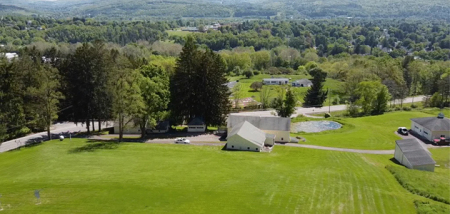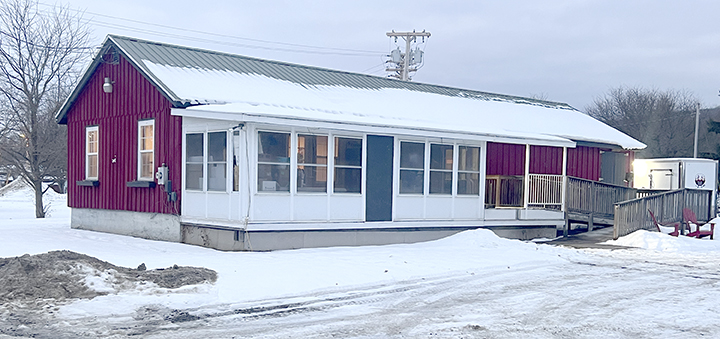Off The Map: It All Comes Crashing Down
Published:
February 23rd, 2018
By:
Bryan Snyder

(This guest feature is a first person account of the mudslideson January 9, at Montecito, California.)
I dropped the shovel, even though I knew there was no way I could reach the jeep in time. A spontaneous rockslide had sent boulders tumbling down the steep hillside, directly above where I’d parked my vehicle, Charlie.
The Thomas Fire one month earlier had devoured almost every scrap of vegetation from the mountains above Montecito, so nothing prevented these rocks from picking up speed during their descent. They leapt five feet in the air, bounced, leapt ten feet in the air, bounced… and I expected a smashed window or dented side panel any second.
One final bounce, and then the boulders struck Charlie with a series of solid thunks – right against the back tire. Zero damage.
It was a stroke of luck that required a ridiculous amount of coordination in the rocks’ trajectory, but I didn’t dare tempt fate again. I rolled the jeep away from the hillside and doubled my efforts to finish my work and get away from this disaster area before the weather turned.
The biggest fire in recorded California history had transformed the steep slopes above the affluent community of Montecito into one gargantuan, unstable booby trap.
When the first rains began to fall, I was still feverishly toiling away with sledgehammer and shovel, staking hay wattles across roadways and digging ditches to divert rainwater. The undeveloped property that I was fortifying belonged to some friends of mine who had feared that the coming storm would erode the roadbeds and make them unusable. I did what I could to strengthen the land’s defenses, though I became increasingly nervous that the scattered showers would loosen more rocks from the barren hillsides.
Finally, I admitted that I needed to leave before escape became impossible. With arms aching after hammering over sixty pieces of rebar into the ground, I drove off the mountain, passed the police checkpoint, and went home. No one else would be allowed to enter the northern region of Montecito until the danger of flooding had passed. For the next twenty-four hours, we could only hope that nature would be kind.
Night fell. The storm came in the darkness. And hope was washed away.
No one predicted how horrific it would be. Among the bursts of rainfall came a deluge that unleashed half an inch of rain in five minutes – a freak phenomenon that should only occur once every two hundred years. The denuded hillsides didn’t stand a chance.
Mud spilled down the mountains, taking boulders and brush along for the ride. The narrow canyons above the city became clogged with debris, forming temporary dams that held back the water until the pressure became too great to withstand. Tidal waves of mud and boulders then crashed through the neighborhoods of Montecito, utterly destroying over a hundred homes, damaging countless others, and carrying twenty-three people away to their deaths.
Not enough residents evacuated, and there were plenty of reasons why. After being driven from their homes because of the Thomas Fire, many people just wanted to get on with their lives. And after seven years of drought in Southern California, we’ve all had difficulty perceiving rain as a malevolent force. We craved rainfall so fiercely for so long that it became psychologically hard to do otherwise. That desire only grew stronger when the fires of December raged unchallenged above the cities of Ventura, Carpenteria and Montecito. We desperately needed the very thing that could destroy us. And destroy us it did.
Weeks later, I was charged to visit my friends’ property and document the damage. To do so, however, I had to get creative, circumventing the road closures and downstream destruction by hiking several miles into the mountainous backcountry. I entered the region charred by the Thomas Fire and was awestruck to find creek beds ten feet deeper than they should have been, scraped raw by the torrential debris flows. I scaled the ravaged hills, where multiple layers of dirt had been ripped away during the storm. And lastly, I made the precarious scramble down steep slopes to examine my handiwork from the previous visit.
Amazingly, the dirt roads had survived. Surface flows had been intense enough to twist rebar and drag several of the hay wattles I’d installed down the mountainside. But the defenses might have slowed the water just enough to blunt its corrosive force until the storm subsided.
Downhill in the main canyon, the situation was far bleaker. Along the creek bed, the trees and truck-sized boulders that once defined the riparian corridor had simply vanished. Bridges, which once gave celebrities access to their estates and enclaves, were now missing entirely. I didn’t dare to venture down into the neighborhoods where all the mud and debris had settled – six feet deep in places. Emergency crews were still at work, and the excavations would take months, if not years to complete.
I took my photos of the damaged creekside roads, then climbed back up into the mountains so I could find a cell signal and send out my report. From a vantage point one thousand feet above the city, I could easily see the rivers of mud that clogged the creek channels and adjacent streets. The flows had settled, but anyone visiting the backcountry as I had would have come to the same scary realization: there was still plenty of loose soil in the steep terrain that hung above the town. The next rainstorm might help germinate the seeds of plants that would protect and stabilize the hillsides. Or it might bring another devastating wave of debris down upon the citizens below. In this age of extreme weather, the reminders are coming more and more often that nature truly has us in the palm of her hand.
Bryan is a 1991 Norwich High School graduate and author of several books, including “Falling Off The Map: Fifty-four Explorations into the Wildest Reaches of the American West”. You can find his works on Amazon and offthemapbooks.com.
Author: Bryan Snyder - More From This Author
Comments







